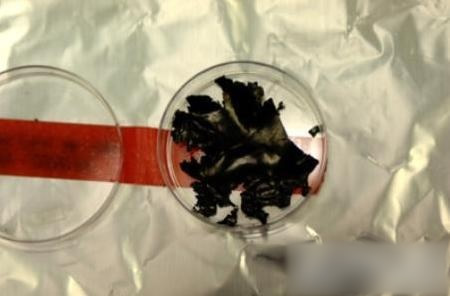MIT researchers invented a surface treatment technology for charging materials. Lithium-ion batteries using the new technology can be charged in seconds. A lithium battery usually takes 6 minutes or more to complete charging. However, the traditional lithium iron phosphate material after the surface treatment to generate nano-scale trenches can increase the battery charging speed by 36 times (only 10 seconds). Lithium batteries using this technology also have a high discharge rate, so they can be used to accelerate the hybrid vehicle, so that the speed of the hybrid vehicle can catch up with the gasoline engine. MIT has applied for a patent for this technology and authorized to two companies. MIT researchers say that because this new technology is an improvement over existing lithium-ion batteries and does not require new materials, commercial products will be available in two years' time. According to Byoungwoo Kang, a doctoral student under the direction of Prof. Gerbrand Ceder, “The surface of the lithium iron phosphate material can be rapidly moved into the channel and rapidly transferred to the terminal.†A few years ago, when Ceder simulated a material used in a lithium-ion battery with a computer, he discovered that lithium ions should be transported faster than previously thought. Subsequent in-depth simulations and studies have found that because of the limited number of channels on the surface of lithium iron phosphate material that can send lithium ions to the bulk material, the transfer rate of lithium ions during the charging process is limited. By accumulating years of experience, Kang and Ceder discovered that: Surface treatment of lithium iron phosphate materials to produce multiple grooves spaced only 5 nanometers can increase the transport speed of lithium ions by 36 times. "By using this technology, battery charging will no longer be constrained by the speed of lithium ion transfer. This means that lithium batteries can not only be charged more quickly, but also can be discharged more quickly." Researchers said that in the future, mobile phones and other small devices using this technology will be able to charge in a few seconds with lithium batteries. For the emerging electric vehicle industry, this means that the speed of electric vehicles will be comparable to that of gas vehicles. It takes two years to apply this charging technology to existing lithium battery substrates and launch products, during which the home charger for electric cars can be redesigned to enable it to handle the rapid transfer of energy. For electric vehicles, the charging speed of the car battery at home is not only limited by the battery itself, but also by the power condition of the owner's home. Tests to date have shown that lithium iron phosphate materials are as durable as bulk materials after nano-scale surface treatment and can be repeatedly charged and discharged without affecting the charging effect due to aging. MIT research funding comes from the National Science Foundation (NationalScienceFoundation), the Center for Materials Research Science and Engineering, and the Advanced Transportation Battery Program hosted by the U.S. Department of Energy.
Euro Fence introduction:
The horizontal Wire is wavy so that the resistance more stronger. Installation for Dutch Post with special circle clamps.
Euro Fence Characteristic:
Euro fence packing in rolls, loading conveniently, installation speedly.
Euro Fence Specification:
wire diameter: 2.0mm, 2.5mm, 3.0mm
mesh size: 50*50mm, 50*100mm
height: 1m, 1.2m, 1.5m, 1.8m, 2.0m
length: 20m, 25m, 30m
Euro fence appplication:
Euro fence popular in Industry zone, Countyard, Villadom, Public grounds, Farm, Highway, Railway, city
Euro fence surface treatment: galvanized wire then PVC coating(thickness 0.8-1.2mm)
Euro Fence Coated Euro Fence,Wire Mesh Fence,Welded Mesh Fence,Pvc Euro Fence Anping Deming Metal Net Co.,Ltd , https://www.wovenfence.nl
MIT Battery Material Samples for Fast Charging